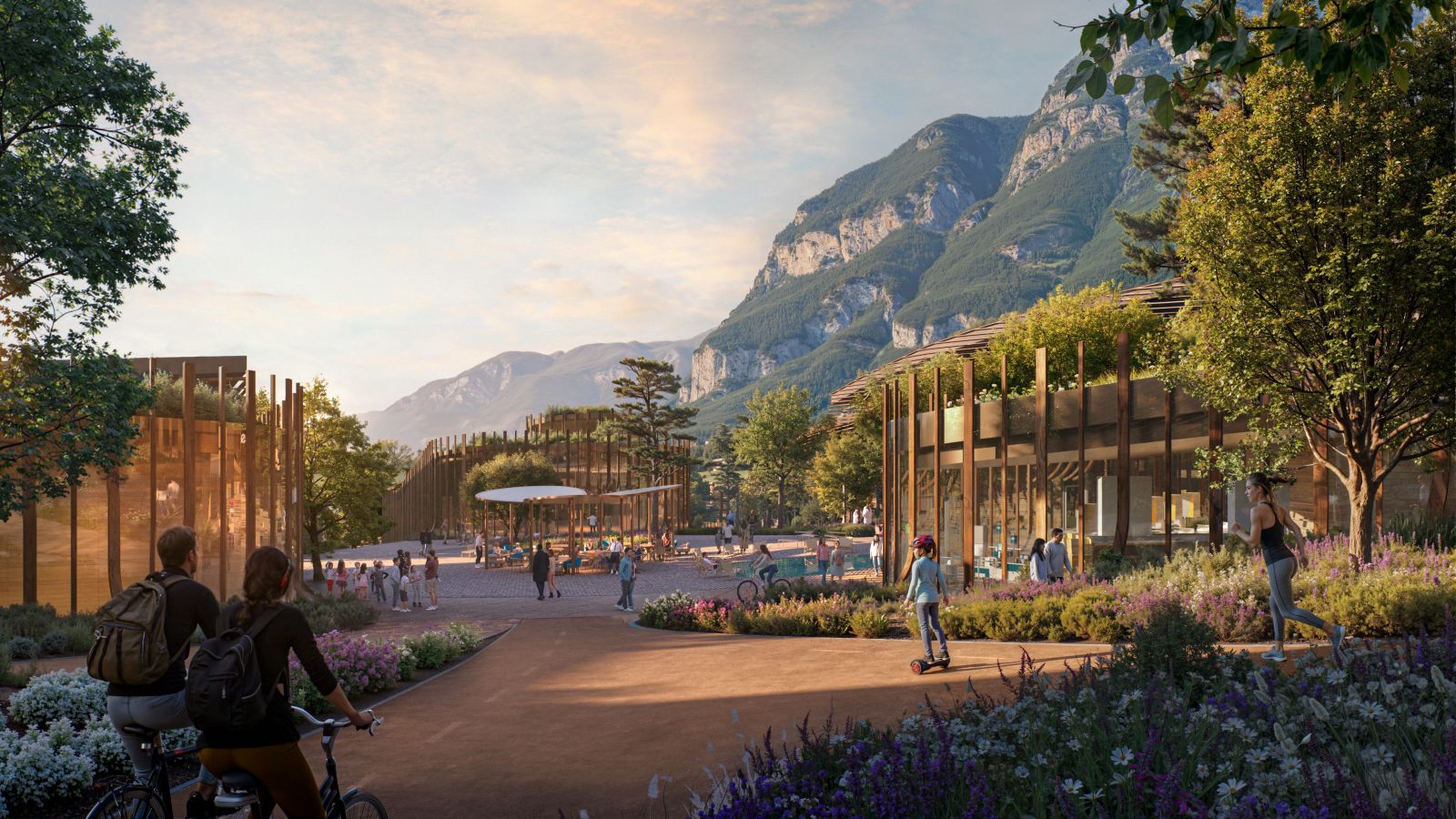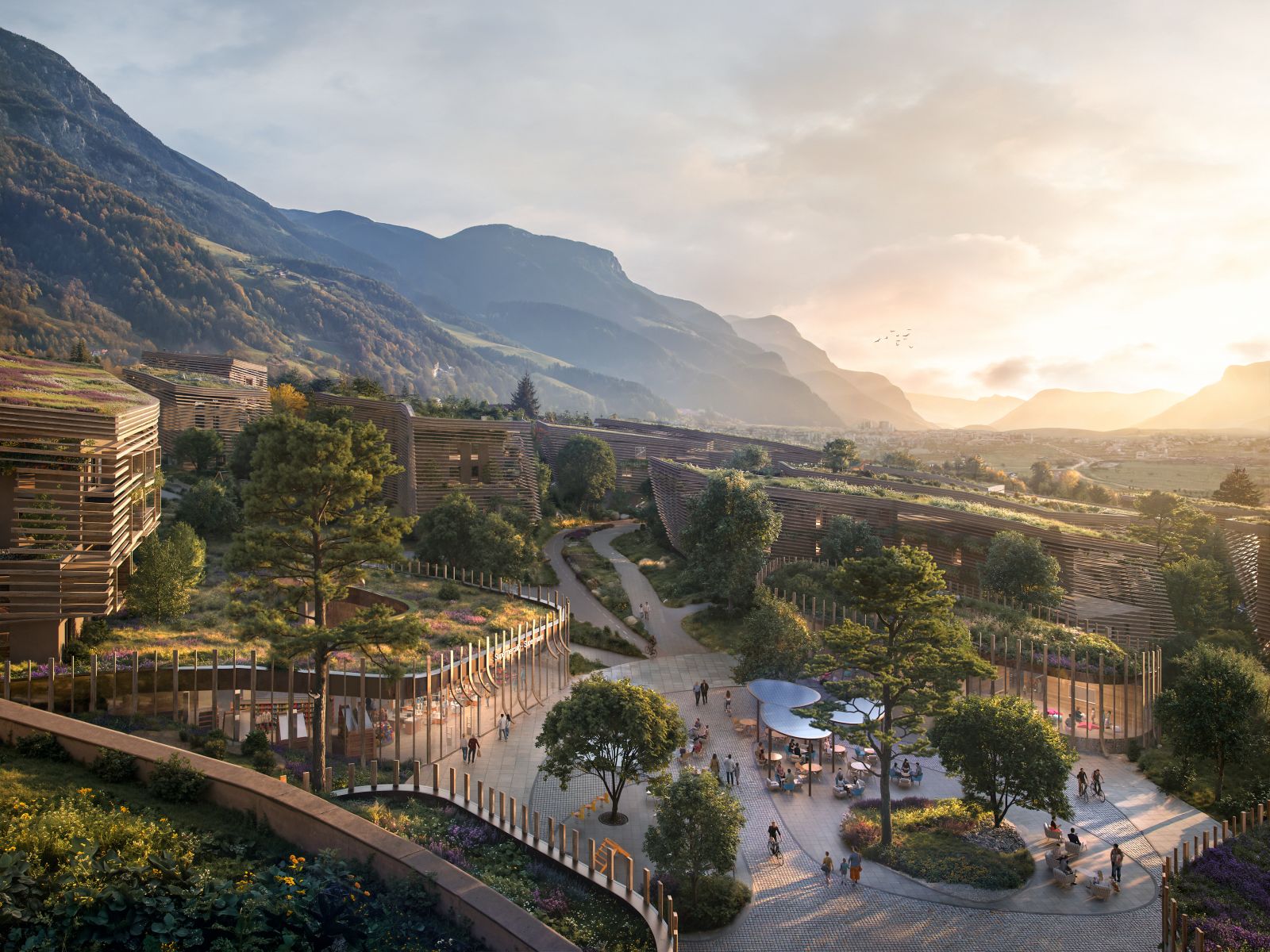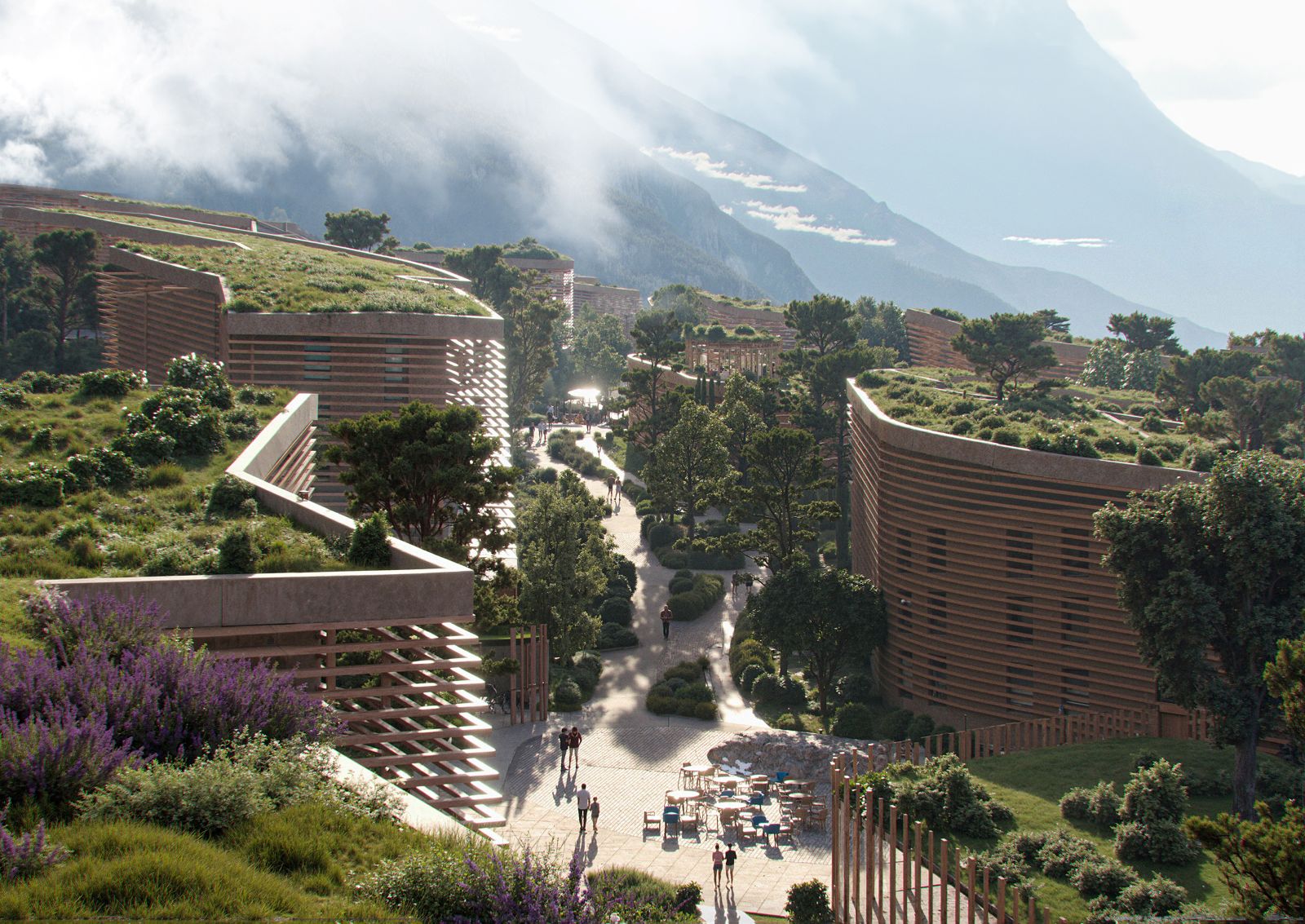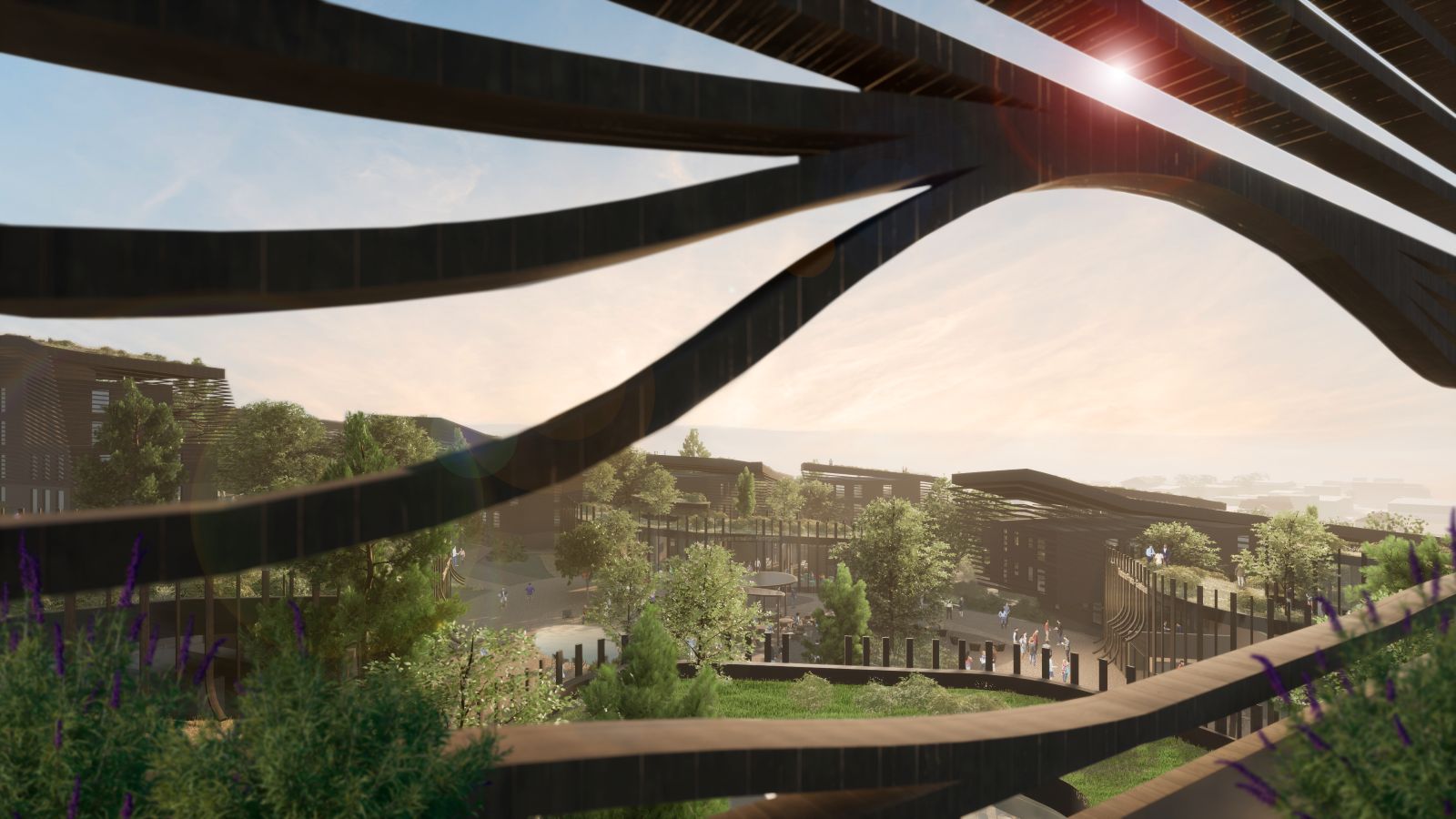On the edge of Bolzano’s municipality, specifically in Pineta di Laives, Renneria takes shape, an ambitious urban development project designed by NOA studio. This new neighborhood, promoted by the Gazzini real estate group, is set in the area’s polycentric fabric and embraces a development model based on soft mobility, integrated agricultural green spaces, and a rich array of public services, with the continuous effort to promote high-quality, inclusive, and environmentally conscious living.

The intervention, located on a 13-hectare site south of Bolzano, represents a significant opportunity for the greater Bolzano area, responding to the challenge of expanding and enhancing housing supply. Entrepreneurs Luca and Matteo Gazzini explain that the location is naturally suited, as it borders existing settlements and key infrastructure. Renneria thus represents the “natural continuation of the existing settlement,” harmoniously completing its urban development. The name itself pays homage to the local historical identity, derived from Maso Renner, a traditional South Tyrolean farm dating back to the 14th century.

With around 800 residential units, NOA has developed a vision that embraces the principles of functional proximity. The neighborhood is conceived as a low-traffic urban ecosystem where walking, cycling, and public transport become the norm. The masterplan anticipates a perimeter ring road for private vehicles, with point access to underground parking. Within the neighborhood, circulation is reserved for essential services, prioritizing public greenery, noise reduction, and safety, and giving priority to pedestrians and cyclists with the construction of three kilometers of bicycle lanes.

Lukas Rungger, NOA founder and project architect, explains that the vision was guided by four key concepts: “residential, cultural, communal, and collaborative”. The agricultural identity is the collaborative and participatory core of the project, with urban gardens, cultivated rooftops, and orchards acting as authentic community catalysts. Over 70,000 m² of deep green will be provided, allowing tall trees to flourish and creating a rich urban ecosystem. The Gazzini brothers highlight that Renneria will host a “one-of-a-kind agricultural school, a true open-air laboratory,” transforming the entire neighborhood into a “distributed classroom”. The 70,000 m² of deep greenery, including educational gardens, fruit trees, and biotope, will become an integral part of the educational path.

From an architectural standpoint, the project is born from the simple yet powerful idea of “extruding the terrain to transform it into inhabitable architecture,” by lifting the landscape and preserving the existing contour lines. The buildings follow the natural slope, acting as a seamless transition between city and landscape. The volumes are clad in wooden slats and are topped with accessible green roofs, designed as hanging gardens and social spaces. Andrea Dal Negro, NOA architect, explains that the buildings vary in height to preserve panoramic views and are strategically oriented to maximize natural light and ventilation.

The beating heart of public life lies in the three new squares, which are designed as “outdoor living rooms, usable throughout the year”. These squares define Renneria’s urban rhythm and will have distinct functions: the southern square will host a market, the central square will be a lively commercial hub of shops and cafés, and the northern square will focus on education and youth, hosting a childcare center, workshops, and student housing. The functional program also includes neighborhood services, a 4-star superior hotel, shops, and dining spaces, while prioritizing the social dimension with units dedicated to specific groups—such as students, seniors, law enforcement, and healthcare workers—aiming to build an inclusive community.

Lukas Rungger concludes that Renneria aims to be an “urban laboratory of innovation, a model capable of combining growth, quality of life, and respect for the environment”. Attesting to its innovative strength, Renneria is among the four global finalists in the “Future Projects – Urban Design” category at the World Architecture Festival (WAF) 2025.


